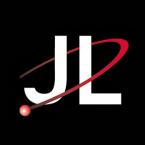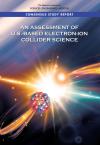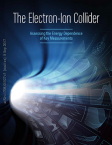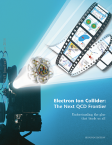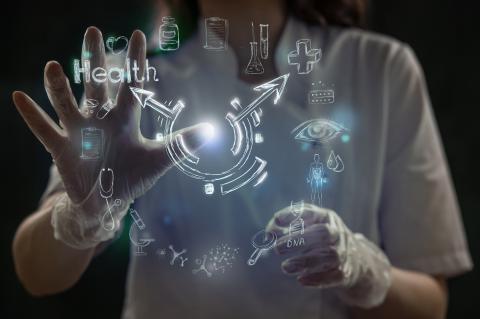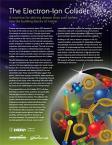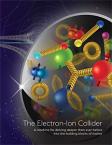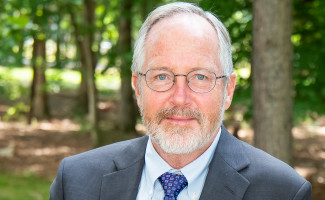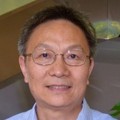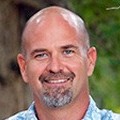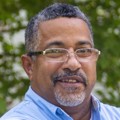Jefferson Lab's Newest Users Group Chair Uses Science to Strengthen Economy of Chile
Experimental physicist and new Jefferson Lab Users Organization Chair Will Brooks has chased scientific answers around the world — pursuing opportunities to lead projects on three continents and in five labs. His research has a profound impact not only on the scientific community, but also on the economies of the countries in which he researches.
Brooks’ curriculum vitae is a concise 19 pages long, packed with vital information on six projects for which he is spokesman at the lab, five collaboration memberships, 18 grants he has been awarded since 2008 and just a sprinkling of titles of more than 900 of his publications in peer-reviewed journals and more than 90 publications in higher-impact-factor journals, including 91 in Physical Review Letters, two in Science, and one in Nature.
Add those projects to the roles Brooks holds on two continents and it becomes a mystery how he finds time to sleep; Brooks is a founding member of the Board of Directors of Chile’s Valparaíso Center for Science and Technology, Director of the “Institute for Advanced Studies in Science and Engineering,” and a professor of physics and experimental group leader for High Energy Nuclear and Particle Physics at the Technical University of Federico Santa Maria, where he has previously served as Director of Research Ring multidisciplinary project, “Experiments on Hadrons with Electroweak Probes: Fundamental Physics and Technology Development.”
Still, the list of Brooks’ achievements continues; he holds two U.S. patents and the honorary position of affiliate professor with the Department of Physics at the University of New Hampshire. He has outdone himself since earning his Ph.D. from Duke University in 1988.
Yet, what may seem like a mindbogglingly dense career is simply the result of well-planned projects that ultimately tie together, according to Brooks.
“I’m interested in the breadth of science,” Brooks says. “I’m interested in how interconnected things can be, so while I’m working on multiple projects at once, they are all connected. That’s one of my favorite aspects of the work I’m doing. It connects experiments done at Jefferson Lab, LHC (the Large Hadron Collider at CERN), Brookhaven and Fermilab.”
Brooks’ Big Collection of Projects
Brooks explains that his strategy for maximizing efficiency is to study one topic in a variety of ways and with other researchers who have complementary projects.
“The science topic is the same or similar in everything that I do so what I learn in one area has an impact in other areas. It looks like a big collection or theme,” he explains.
Regarding the theme of his research, Brooks says, “I’m interested in what happens when you give a quark a lot of energy in the scattering process. If you hit it with a baseball bat, what happens? You hit a pumpkin with a bat, it makes a mess and flies away. With a quark, it tries to fly away and it makes more quarks on that tiny scale. So that process fascinates me. Normally, when you hit the quark with the bat, a really long time later you have some new particle. You put a lot of energy into the system, you end up with more particles than you started with. What I like to do is implant that whole process inside an atomic nucleus. Then, you can study these processes on short distance scales by forcing the whole thing to pass through a nucleus and then interact with a nucleus. It’s like the nucleus is the analyzer for the quark you hit with the baseball bat.”
Connection Between Science and Economic Prosperity
Just as Brooks enjoys seeing the connection between various aspects of science, his research has also enabled him to have a direct, positive impact on an entire nation’s economy. Since 2008, Brooks has been developing the physics department at the Technical University of Santa Maria in Chile and is part of a group preparing to build an international underground lab that is expected to strengthen economic and political bonds between Chile and its neighbors.
“It’s extremely well documented that the more scientific research is done in a country, the more economic prosperity occurs,” he says. “That’s partly why I’m here in Chile. Chile is classified as a developing country. One of the things that drew me here is that the government of Chile is convinced that scientific research and achievement has a positive impact on the economy. They have poured money into science and technology programs. There’s a huge opportunity to increase scientific literacy…it’s easy to make a big impact.”
One of those programs is the underground lab that will be built alongside a transportation tunnel in the Andes mountain range between Chile and Argentina.
“The reason for the underground lab’s location is because there is a planned truck tunnel through the mountains,” Brooks explains. “It will cost one billion dollars to construct the tunnel. That’s too costly to build just for the lab, but if we create the lab as a side chamber on this existing construction project, it will only cost 40 million dollars.”
While the construction of the underground lab is driven by commercial interest to have the tunnel, it will also strengthen political bonds between neighboring nations.
“The lab will be a cooperation between Chile, Argentina, and two other counties,” says Brooks. “It’s an international effort. International scientific projects help bond countries together and help to avoid conflict between them. This is a story that we have seen many times. All neighbors fight with each other. This project will strengthen ties between those countries.”
Underground Lab Could Result in Ground-breaking Discoveries
The underground lab could also lead to break-through discoveries. Once the lab is built, it will be one of the deepest in the world . “With this underground lab, you would enter the tunnel at 4,000 meters above sea level, and by the time you go through the Andes mountains, there will be a lot of rock overhead, so it will be equivalent to being almost the deepest lab in the world,” Brooks says.
“The underground labs are for experiments that need a lot of sensitivity,” explains Brooks. “The whole idea of a deep underground lab is to be isolated from all of the things that are making life complicated at the surface of the Earth if you’re trying to measure something that needs a lot of sensitivity.”
For example, cosmic rays are going through the human body all day and night, and those rays are charged particles. If a researcher is looking for a rare signal, the rays make the environment too busy on the Earth’s surface, so it’s necessary to go deep underground for accurate results.
Also, Brooks notes, the geographic location of the lab matters.
“Almost all of the labs are in the northern hemisphere, which could have an impact on experiments — we don’t know. Research in the southern hemisphere matters because there are searches for dark matter candidates that see some day-night variations, and the question is: is that variation because of the direction of the signals you’re getting or is it something else? Is the result weather or geology-related? If you have a sister lab in the southern hemisphere with the same kind of equipment as a lab in the northern hemisphere, you can check to see if the same experiment gets the same result. It’s a way of making a systematic check of variations that depend on the orientation of the Earth.”
Training the Upcoming Generation of Scientists Is Mutually Beneficial
To help him manage his multitudes of projects at labs around the world, Brooks relies on the upcoming generation of scientists that he is helping to train.
“A person like me has experience but only 24 hours a day,” he says. “So, you find young people who are interested in being trained and learning. They do the vast majority of the hands-on work, and they learn from it and you guide them. We have quite a few talented young people working with us, from master’s degree students and undergraduates to postdocs and faculty. They all do a huge amount of the work on these projects, because I am at my limit.”
Still, despite his multitude of achievements and honors, Brooks insists, “I know busier people than I …and they all work at Jefferson Lab and CERN.”




